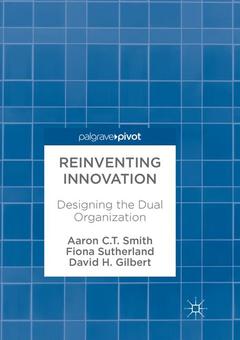Description
Reinventing Innovation, 1st ed. 2017
Designing the Dual Organization
Language: English
Subjects for Reinventing Innovation:
Support: Print on demand
Description
/li>Contents
/li>Biography
/li>Comment
/li>
Aaron C.T. Smith is Professor in the College of Business at RMIT University, Australia. He has authored 18 books, over 100 academic articles, and consulted to more than 120 organisations on these issues.
Fiona Sutherland was Senior Lecturer in the La Trobe Business School, Australia until 2015. She continues to teach into the MBA program.
David H. Gilbert is Associate Professor of Entrepreneurship and Innovation in the College of Business at RMIT University, Australia and Founder and Director of the internationally acclaimed Fastrack Innovation Program.




